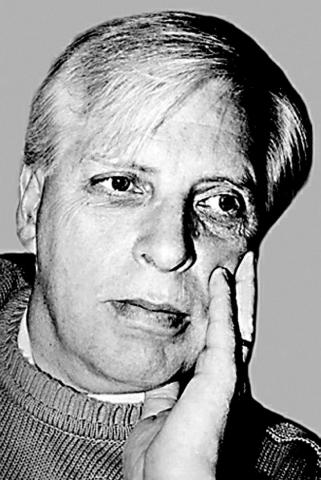Bio
Birgir Sigurðsson was born in Reykjavík on August 28, 1937. After finishing his middle school education, he became a fisherman at a herring ship, at the age of fifteen. For the next few years, Birgir did various jobs on land and see, until he took up his studies again. He received a teaching diploma from Iceland's Teacher Training College in 1961 and then became a journalist at the daily Tíminn until 1964. He was a teacher at the elementary school Mýrarhúsaskóli in Seltjarnarnes (a Reykjavík suburb) until 1967, after which he moved to Amsterdam to study singing. He had already studied at the Reykjavík School of Music for some years, on the side of his teaching job.
While in Amsterdam, Birgir started writing poetry, gave up his singing and returned to Iceland with the poetry book Réttu mér fána (Pass me a Flag) in his suitcase. Birgir became a headmaster at the elementary level, first in Gnúpverjahreppur from 1968 – 1975 and then on the small island Hrísey from 1977 – 1979. He also taught at Þingholtsskóli in Kópavogur the winter of 1975- 1976. Birgir was the vice president of The Writer's Union of Iceland from 1982 – 1986, president of the Association of Icelandic Artists from 1985 – 1987 and was a member of the Reykjavík Art Festival committee 1985 – 1987 and Reykjavík Cultural City of Europe in 2000. Birgir wrote poetry, plays, novels as well of non-fiction works. He was also a translator and did documentaries. His play, Dagur vonar (A Day of Hope) received much acclaim and was hugely popular when staged by the Reykjavík Theatre Company in Iðnó Theatre in 1987. It appeared on print in the same year. Plays by Birgir Sigurðsson have been staged at the National Theatre, The City Theatre and the Akureyri Theatre Company. They have also been performed on National Radio. Abroad, his plays have been staged in placed such as Los Angeles, London, Copenhagen, Åleborg, Thorshavn, Vaasa and Stockholm. His first novel, Hengiflugið (The Precipice), was published in 1993 and another one, Ljósið í vatninu (The Light in the Water) appeared in 2000.
Birgir Sigurðsson passed away in Reykjavík on August 9, 2019.
From the Author
All of My Word
I
My well is not a source
my well is a compost of words
that men have poured into my earonly if I pour
from my well
into the containers of men
will it be filleda stale word tastes bitter
quenches no one´s thirst
it carries germs
that men breathe inII
my silence forms a word
but does not keep it
if I keep the word
I lose the silencewhile the word is still forming
I wait quietly
a speedily spoken word
is a miscarriageI do not chip away at my word
a half-said word is meant
for no one except by halfIII
I speak all of my word
in splendid poverty
it stands at your sideshow me your word
say it to me all
make it ours
From the poetry book Réttu mér fána (Hand Me a Flag); 1968
This poem is here in place of a personal essay according to the author´s wishes.
Translated by Vera Júlíusdóttir, 2005
About the Author
The Works of Birgir Sigurðsson
Birgir Sigurðsson is undeniably a versatile author and as such, has tried his hand at most literature forms. Yet, it is Birgir´s plays that have probably been noted most. His play Dagur vonar (A Day of Hope) is, for example, one of the most popular Icelandic plays ever, in the category of dramatic theatre works. Birgir has received acclaim as a playwright and the realism of his works has appealed to audiences; his plays have been translated, and some of them have been played abroad.
In 1968, a year of great turmoil, a poetry book by Birgir was published which, in the spirit of the times, was titled Réttu mér fána (Hand Me a Flag). There is sometimes humour in the poems, yet at the same time they are highly political. It could be argued that Réttu mér fána gives the first taste of the social criticism which later would appear in it’s strongest form in Birgir´s first plays, and in the novel Ljósið í vatninu (The Light in the Water). Interestingly, the first poem of the book already makes a certain reference to the theatre:
en hið mikla svið
skógurinn sjálfur
vaxinn í líf þitt[and the great stage
the forest itself
grown into your life]
and later in the book Birgir is still on "stage" in his poetic voice:
þú gengur inn á sviðið
þér er í mun að skila
því er brjóst þitt geymir(you walk on stage
you are eager to give back
what is stored in your heart]
Perhaps this shows the "direction" Birgir has taken. A bit later, or in 1974, more poems by Birgir were published in Á jörð ertu kominn (On Earth Thou Art), which is a group of poems which were meant to be attached to a cantata by Gunnar Reynir Sveinsson. Birgir´s subject matter is in a similar vein as in the first poetry book, but the form of the writing here is tighter and clearly on a more solid track.
In 1972, Leikfélag Reykjavíkur (The Reykjavik Theatre Company) held a playwriting contest to celebrate the company´s 75th anniversary, in which Birgir Sigurðsson received first price for his work Pétur og Rúna (Peter and Roni). The work is really a story about a romantic young couple´s desire to live outside of established conventions. They value love and compassion, but belong to the world of the rat race, speed and reckless individualism; yet there is a glimmer of hope at the end. Birgir covers similar ground in his next work, Selurinn hefur mannsaugu (The Seal Has Human Eyes), which also premiered at The Reykjavík Theatre Company. The main theme of the work is an issue that was very current in the seventies, the migration from the countryside to Reykjavík. It is in fact a remarkable play, which has not through the years received the attention it deserves; possibly because the setting of the work is very realistic, but at the same time Birgir puts long sequences of very unrealistic poetic dialogue into his characters´ mouths. It is that very contrast, which increases the explosiveness of the play and lends it its particular magic. Birgir´s very hard-hitting criticism of the rat race and capitalism is harsh, but the poetic dialogue softens the work a little and helps to form a perfect contrast to the object of his criticism. The work provides a sharp analysis of the layer cake of different age groups in society. The young people, Dengsi and Systa, provide a little hope for a return to a simpler life; Hans and Hanna are the generation who sacrificed their birth place, and the superior values of a previous era, for asphalt happiness; the old lady, Hans´ mother, represents all the things that have been tossed aside. Yet, through the younger generation, comes a little hope.
Birgir´s third play, on the other hand, which is in part a historical drama, Skáld-Rósa (Poetry-Rose), premiered at The Reykjavík Theatre Company in 1977. Interestingly however, its subject matter is perfectly in tune with Birgir´s preoccupations up to then; because the world that is being described has great inequalities in distribution of wealth and power, and Birgir stresses that inner wealth is better than material wealth. Rósa does not want to serve those who sit in the seats of material wealth. She has already seen how badly that can end, because this is what Natan did and Páll Melsteð before him. But in the end she has found some hope because she has stayed true to her ideals.
The Icelandic National Theatre then produced Birgir´s next work, titled Grasmaðkur (Grass Worm) in 1983. One might say that Grasmaðkur is a play about hope; a cry for peace, so that the human race may thrive, and have a chance of survival in a complex world. In this play, preaching is kept at a minimum, yet the work packs a hard societal punch.
The Reykjavík Theatre Company had the pleasure of premiering Birgir´s strongest play to date, Dagur vonar (A Day of Hope, 1987). Dagur vonar is dedicated to the memory of Birgir´s sister, Sigríður Freyja Sigurðardóttir, and fragments of poems by her are sometimes spoken by the character of Alda in the play:
ALDA: (fjarrænt en þó ekki eins og áður): Hún var nú stödd hjá tré
sem var fegurst allra trjáa. Það var eins og huggun sem sagði að enn væri til fegurð, þrátt fyrir allt. Og hún gaf sig á tal við lífið:
„Þú hefur gefið mér margt og sagt mér hvers virði allt er, en eitt met ég mest.“ - Lífið langaði þá til þess að vita hvað af þess miklu auðæfum væri dýrast. „Fagra líf,“ sagði hún, „ef mér væri ekki gefinn skilningur væri ég eins mikil þögn og dauðinn.“[ALDA: (distant, although not as before): She now found herself by a tree which was the most beautiful of trees. It was like consolation, which said that beauty still existed, after all. And she struck up a conversation with life:
"You have given me many things and told me the value of everything, but there is one thing that I value most." – Life then wanted to know which one of those great riches was the dearest. "Beautiful life," she said, "if I had not been given understanding I would be as great a silence as death."]
The work is a highly dramatic tragedy, although not in the form of classical tragedy because the cause of the tragedy is unclear. Although it seems that Gunnar, an obvious embodiment of evil in the play, plays a big part in it. However, Alda´s madness is not caused directly by him, although her illness may be the main reason why her mother, Lára, seeks out Gunnar´s company. However, therein lies the paradox; because if Alda is to have any hope of recovery, Lára needs to rid herself of the criminal Gunnar. Yet again, Birgir shows us a complicated situation in human relationships that does not have an easy solution, while at the same time suggesting that a resolution may be tragic. The poetry in the work is often very effective and when one reads the work, regardless of theatrical training, anyone can see how much meat there is here for the actors to sink their teeth into:
GUÐNÝ: Það er til land. Þar er hvítt fjall. Undarlegir lækir líða niður hlíðarnar á þessu hvíta fjalli. Þeir eru búnir til úr sannleika. Og fjallið er líka búið til úr sannleika. Og það er yndislegt fjall.
REYNIR: Land sem ekki er til. Fjall sem ekki er til. Sannleikur geðveikinnar.
GUÐNÝ: Land sem er til í hverjum manni. Fjall sem er til í hverjum manni.
Og sannleiksfuglinn syngur.[GUÐNÝ: There is a land. There is a white mountain there. Strange rivers glide down the sides of this white mountain. They are made of truth. And the mountain is also made of truth. And it is a lovely mountain.
REYNIR: A land that does not exist. A mountain that does not exist. The truth of insanity.
GUÐNÝ: A land that exists in every human being. A mountain that exists in every human being.
And the Truth Bird sings.]
Birgir Sigurðsson is still engaged in social criticism with the play Óskastjarnan (The Wishing Star), which premiered at the Icelandic National Theatre in 1998. Óskastjarnan is a modern domestic drama in a countryside setting; Birgir plays with the opposites of the Icelandic countryside on one hand and the center the entertainment industry in Hollywood on the other. The myth about life and work in the countryside being the polar opposite of art and entertainment creates the tension, which gradually intensifies throughout the work. The work is in fact quite conventional in its structure and uses traditional dramatic devices to drive the story, like uncomfortable events from the past and the classic dramatic "choice." As in Birgir´s previous works, he places the narrative within a certain time period by referring to the societal problems of that particular time; here it is the crisis of traditional farming which is the starting point. The author does not point out any particular solutions, but as before, he points out that the problems can be overcome; that there is hope.
Birgir has written two books that could be called academic, which are quite different to each other and neither of them follow the strict guidelines of academic books. The former is a more comprehensive work; contains a more extensive text and received much attention when it came out in 1989. The title of the book is Svartur sjór af síld (The Sea Was Black with Herring) and it has the subtitle síldarævintýrin miklu á sjó og landi (The great herring adventures on sea and land). This book is a comprehensive history of the herring industry and herring fishing around Iceland. It is sometimes told at a very personal level but in other places it is a scholarly study. The main strength of the book lies precisely in that combination of scholarship and the storytelling flair that often characterizes Birgir´s style. Five years later, the book Korpúlfsstaðir: saga glæsilegasta stórbýlis á Íslandi (Korpúlfsstaðir: The History of Iceland´s Greatest Large Farm) came out. Here Birgir recounts the history of Korpúlfsstaðir in considerable detail, its building history, architecture, farming and its people. Much of it is based on interviews but also on personal experience, as Birgir stayed at the farm for a period of time when he was young. The book is in large format and contains many photographs. Birgir also made documentary films for television based on the same material.
Birgir presented the short story collection Frá himni og jörðu (From Heaven and Earth) in 1989, and short stories by Birgir have regularly been published elsewhere. The tone of these short stories is rather light-hearted and in places, some of them look like small absurd short plays.
Birgir´s first novel, Hengiflugið (The Abyss, 1993) is a complex story, which looks at contemporary society in a very personal way, through the people whose story it tells. The protagonists, Haukur and Inga, form a kind of a central axis that numerous other characters revolve around; and at the same time they are the author´s base camp; from them he goes on excursions to explore issues as diverse as politics, glamour without substance, promiscuity and seafaring. All these excursions weave a complicated web, which constitutes the story. However, perhaps it is Birgir´s conclusion at the end of the story, that the times we live in have become too complicated, and take too big a toll on us, and that we overextend ourselves much to far in our pretension – that we must weave off the top, simplify.
In the year 2000, the novel Ljósið í vatninu (The Light in the Water) came out. One can safely say that in this story, Birgir goes back to his first plays when it comes to the subject matter, and it especially calls to mind Selurinn hefur mannsaugu (The Seal Has Human Eyes). Still, some things are reversed here; in this one a young man returns back to his home province after life has dealt him heavy blows. This is a touching story, quite political in nature and fluidly written. The poetic style of the work, similar to the poetic overtones in Selurinn hefur mannsaugu and Dagur vonar, emphasizes beautiful nature descriptions and other strong images in the text. In this work, nature is under threat from dreary plans for industrialization; with the reader simultaneously sensing the threat posed to Birgir´s poetry; an amazing feat of writing.
Birgir has also been quite an active translator and has translated plays by Sam Shepard, Arthur Miller and Tennessee Williams and novels by Doris Lessing, e.g. Birgir is one of three people who oversaw the publication of the book 60 valdar ljóðskákir stórmeistarans Davíðs Bronsteins (A Selection of 60 Poetic Chess Games of the Grand Master David Bronstein) in 1974, although Birgir did not write much in the book. He has also taken interest in many issues and has written articles in newspapers and magazines; he is brilliant with words and clever in debates.
Even though Birgir Sigurðsson´s writing career has been diverse, he is generally thought to have risen to the greatest heights as a playwright.
© Guðmundur Brynjólfsson, 2003.
Translated by Vera Júlíusdóttir.
Articles
Criticism
Neijmann, Daisy L., ed. A History of Icelandic Literature.
University of Nebraska Press, 2007, pp. 577-578
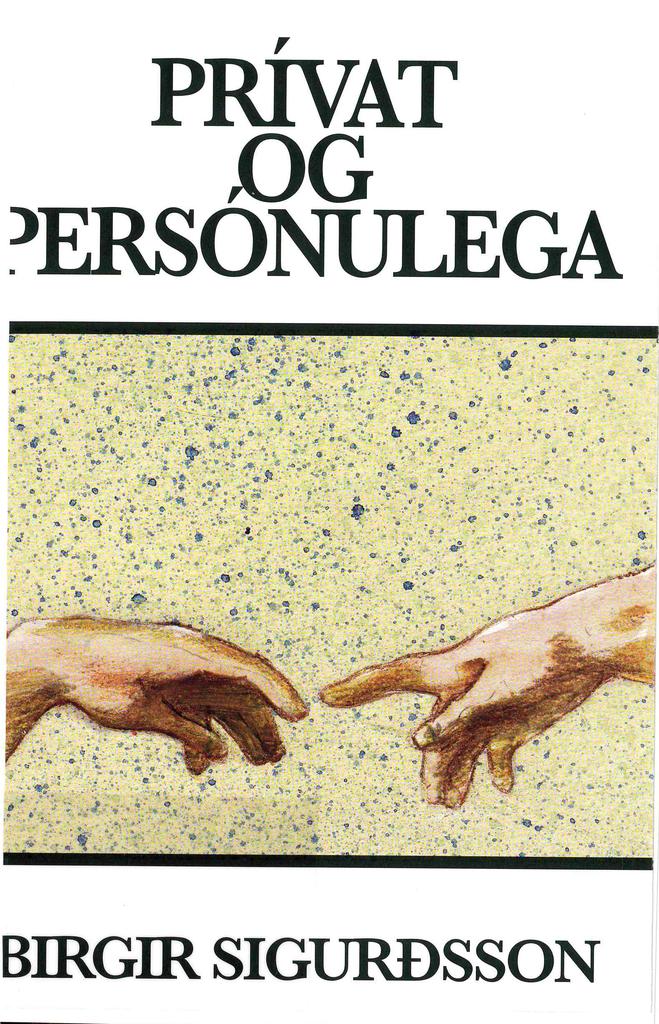
Prívat og persónulega (Between You and Me)
Read moreEndurreisnin og almúginn (The Rebellion and the Commoners)
Read moreSú Hundraðasta (The One-Hundreth)
Read more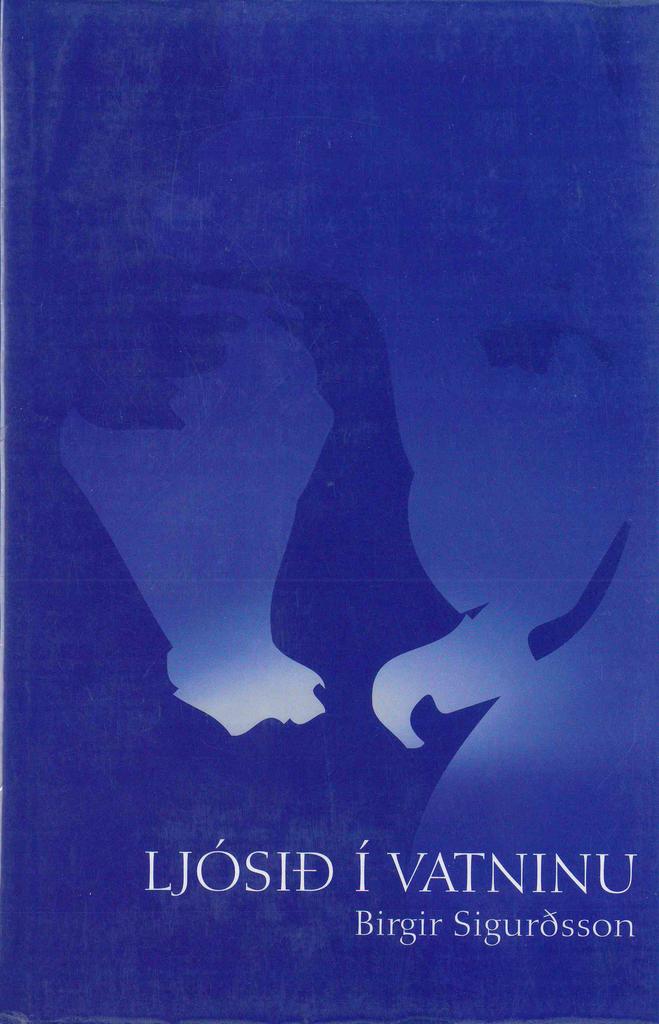
Ljósið í vatninu (The Light in the Water)
Read more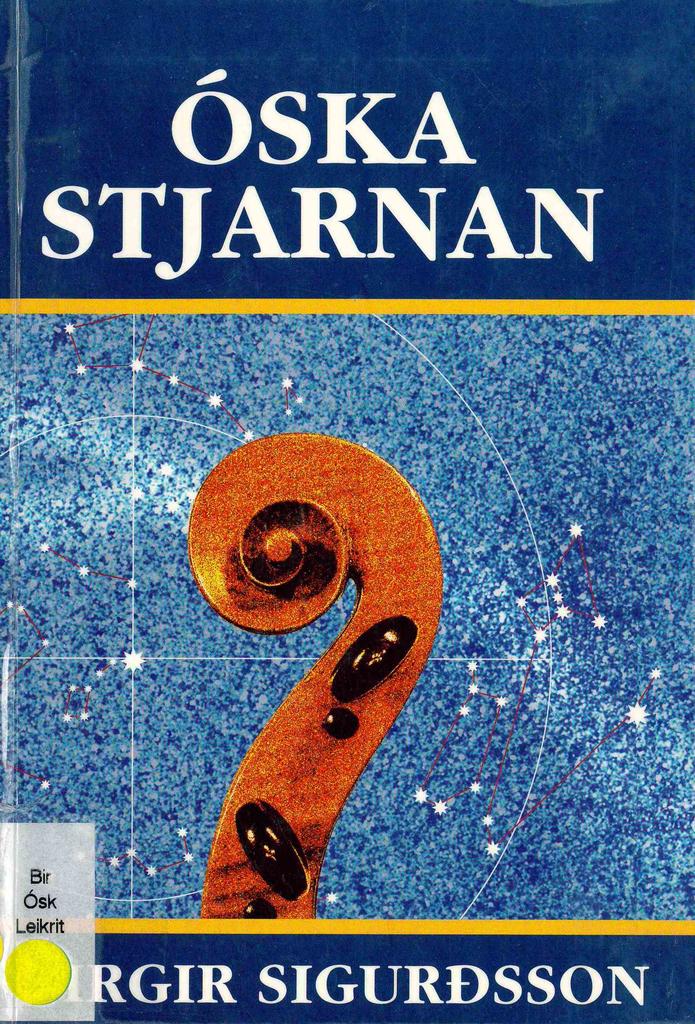
Óskastjarnan : Leikrit í fjórum þáttum (The Wishing Star : A Play in Four Acts)
Read moreKöttur á heitu blikkþaki (Cat on a Hot Tin Roof)
Read moreGlerbrot (Broken Glass)
Read moreKorpúlfsstaðir : saga glæsilegasta stórbýlis á Íslandi (Korpúlfsstaðir : The story of the Most Magnificent Ranch House in Iceland)
Read more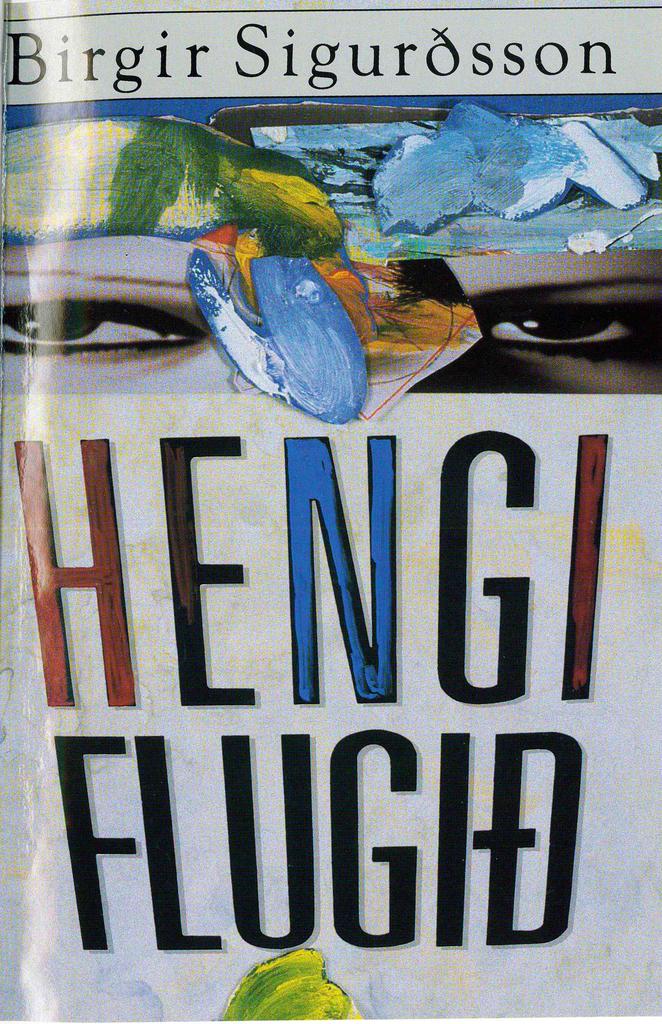
Hengiflugið (The Cliffs)
Read more
Langferð Jónatans (Jónatan´s Journey)
Read more
